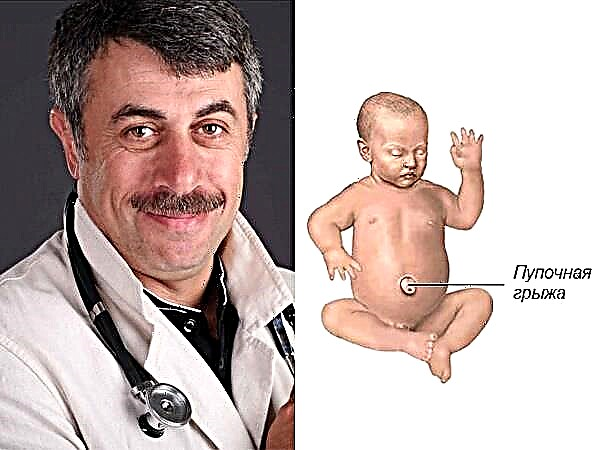
Many women have heard that after a cesarean section, it takes longer to lie in the hospital. In this article, we will tell you how many days after an operative delivery a woman can go home. For what reasons can she be detained in the hospital for a longer time?

Hospitalization terms and preparation
If a woman is about to have a caesarean section for medical reasons, and the operation is planned, they usually try to carry it out after 39 weeks of pregnancy. At this time, the baby is considered fully term, so the risk of respiratory failure is minimal.
It is recommended to go to the hospital about 3-5 days before delivery. This time is necessary so that doctors can prepare as well as possible for the surgical delivery.
Preparation includes a wide range of activities. Doctors compulsorily make a detailed obstetric history of the expectant mother (analyze the number of births, abortions, miscarriages, gynecological operations), take into account the presence of possible concomitant diseases, including chronic ones.
With concomitant ailments, consultations of related specialists (cardiologist, nephrologist or doctors of other specializations) are often needed in order to plan the operation, select and calculate the doses of drugs that are safe for the woman in labor.

Before a planned caesarean section, it is considered mandatory to undergo ultrasound and CTG already in the hospital.
It is very important for a doctor who will operate on a woman to know all the nuances of the location and development of the child - posture, head tilt, its estimated weight, head diameter. You also need to make sure that the baby feels good - his heart rate, movements and other parameters that indicate his health are normal.

A woman in the walls of the maternity hospital is tested for HIV, syphilis, viral infectious hepatitis, as well as general blood and urine tests, and a biochemical blood test.
Under certain indications, a coagulogram is done - a blood test to identify specific factors of blood clotting. Be sure to receive from the laboratory confirmation of the blood type and Rh factor of the expectant mother in case she needs an urgent blood transfusion.

About a day before the operation, the anesthesiologist works with the pregnant woman. The doctor and the patient meet, the doctor finds out the weight and height, body characteristics of the expectant mother, identifies contraindications to one or another type of pain relief and certain drugs that are used for these purposes.
Together with the patient, the doctor is determined with the type of anesthesia - spinal, epidural or general.

Before the operation in the evening, the woman is not recommended to eat, it is only allowed to drink sweet tea.
In the evening before going to bed, the expectant mother receives premedication drugs - usually barbiturates or other drugs that will ensure her sound sleep throughout the night. It is important not to worry, namely, to sleep soundly so that there are no spontaneous surges in blood pressure during the operation.
In the morning of the day of the scheduled operation, the woman's pubis is shaved to remove all hair from the areas close to the surgical site, a cleansing enema is applied to cleanse the intestines and reduce the pressure of its loops filled with fecal masses on the uterus. It is recommended for all pregnant women, without exception, to wear compression stockings (not lower than the second degree of compression) or to bandage their legs with an elastic bandage. This is necessary in order to prevent the development of thromboembolism in the early postoperative period. After that, the woman is escorted to the operating room, where the anesthesiologist and surgical team are already waiting for her, who are ready for a caesarean section.

What to take with you?
The list of things that are recommended to be taken to the obstetric institution with you if an operative delivery is coming is somewhat larger than for the upcoming physiological birth. Although a pregnant woman should not ignore the likelihood of an emergency operation if something goes wrong in the birth process.
Therefore, it is recommended to pack your belongings to the maternity hospital, taking into account possible surgical deliveries.

From the documents, the expectant mother must definitely take passport, compulsory health insurance policy, SNILS, exchange card and generic certificate. If the selected maternity hospital provides the service of issuing a birth certificate (which can be found out in advance), they put with them a marriage certificate and a photocopy of the spouse's passport.
If a woman has concomitant chronic diseases, it is important not to forget to bring a medical record, so that doctors can imagine which consultations of related specialists at the stage of preparation for childbirth may be needed.


For a woman, you will need to take a new disposable razor, soap, toilet paper, wet wipes, a comb, a phone and a charger for it. You will need washable slippers (not rags), a towel, a bathrobe, and a nightgown.
Clothing will be needed before childbirth, since after the operation you will need to be in sterile shirts, which will be given out every day.
For a child, it is worth taking with you several diapers for newborns, 2-3 shirts and rompers, if you do not plan to swaddle the baby, hats.
You may need a breast pump as well as a pacifier. For the operation, take two packs of medical elastic bandage or purchase compression stockings in advance from the orthopedic salon.

Early rehabilitation time
Immediately after the operation, the woman is transferred to the intensive care unit or to the intensive care unit if certain complications have arisen during the surgical procedures. The woman spends about 7 hours under the supervision of medical personnel. They measure her pressure, monitor how the uterus contracts, measure the temperature, and administer pain relievers and contraction drugs. Particular attention is paid to the process of getting out of the state of anesthesia.
After 6 hours, the woman is transferred to the ward. After another 2-3 hours, she can begin to turn to one side, then sit down and stand up carefully. The baby can be attached to the breast as in the operating room if the birth took place under spinal or epidural anesthesia, or it can be brought in for the first time after the mother sits down and starts to get up.

At first, caring for a newborn may be too difficult for a new mother, therefore, on the first day, they usually bring the baby only for feeding. But already on the second day, if the mother's condition is normal, the baby can be transferred to a joint stay, if this is provided for by the rules of the perinatal center or maternity hospital. The sooner a woman gets up with the necessary precautions, the better the prognosis for rehabilitation.
Earlier return to physical activity reduces the likelihood of adhesions, inflammation, and speeds up the recovery process.

After a cesarean section, they were previously discharged only on the 9-10th day after the removal of the stitches and observation for another couple of days.
Today, it is considered the standard to be discharged 5 days after surgery. Antibiotics, which used to be injected to everyone, without exception, to prevent inflammation, today are done only to those who have the likelihood of complications, there were complications in the operating process. The course of antibiotic treatment, which used to be 7-10 days, has now decreased to 3-5 days thanks to new drugs. And the woman removes the stitches in the antenatal clinic after discharge for about 7-8 days. They usually do not keep them in the hospital for more than five days after the operation, if there are no complications in either the mother or the newborn.

What affects the timing of discharge?
Medical standards approved by the Ministry of Health do not imply discharge earlier than the fifth day, even if the mother and baby are feeling great.
The thing is that not all pathologies can be seen in the first few hours and days, so a five-day observation of the child and his mother is considered optimal and minimum acceptable. For a longer period of time, a postpartum woman can be left in the maternity hospital, who has signs of complications - high body temperature, drops in blood pressure, bleeding, signs of suppuration in the area of the postoperative wound, hypotension or atony of the uterus. Special attention is paid to the inner seams on the wall of the uterus, and therefore, on the third or fourth day in the hospital, a control ultrasound is usually done and only then, if everything is in order, an extract is prepared.

If the complications cannot be eliminated in 2-4 days, then the woman can be transferred to a gynecological hospital, and the baby can be discharged home with his father or grandmothers. Such a measure is rarely taken, because every day is important for establishing breastfeeding.
But if a woman is shown heavy antibiotics, repeated surgery, then breastfeeding is likely to be temporarily not recommended.
A mother and child can be detained in the maternity hospital for several days even if the child has health problems. But such a solution to the problem is rare today. If the baby needs further medical supervision, treatment, he and his mother are transferred from the maternity hospital by special medical transport to the early childhood department of the children's hospital.

After discharge
Complications after surgery can be not only early, but also late, and therefore it is important for a woman to strictly adhere to the recommendations even after discharge.
- It is forbidden to lift weights above 3-4 kilograms for 6 months.
- You cannot swing the press, get out of bed abruptly so as not to damage the seams.
- Be sure to treat the seams with brilliant green, dry the wound with hydrogen peroxide. It is recommended to wear and daily change the surgical postoperative dressing before removing the stitches.
- In the first 2-3 months, it is advisable to wear a postoperative bandage.
- Sexual relations must be abandoned until the complete cessation of vaginal postpartum discharge (lochia), you can resume sex life 8 weeks after the operation with the use of barrier contraceptives (condoms).
- A woman should avoid constipation and bloating, and therefore it is important to empty the intestines every day, on their own or with the use of laxatives, not to eat foods that lead to gas production.

They are not in the maternity hospital for a long time. According to the new standards, lie exactly as much as needed by the minimum standards. Therefore, a woman should not worry about the timing of discharge. In 90% of cases, on the fifth day after the operation, the mother goes home with the baby.

You can learn about the timing of discharge after childbirth and the so-called early discharge from the following video.



